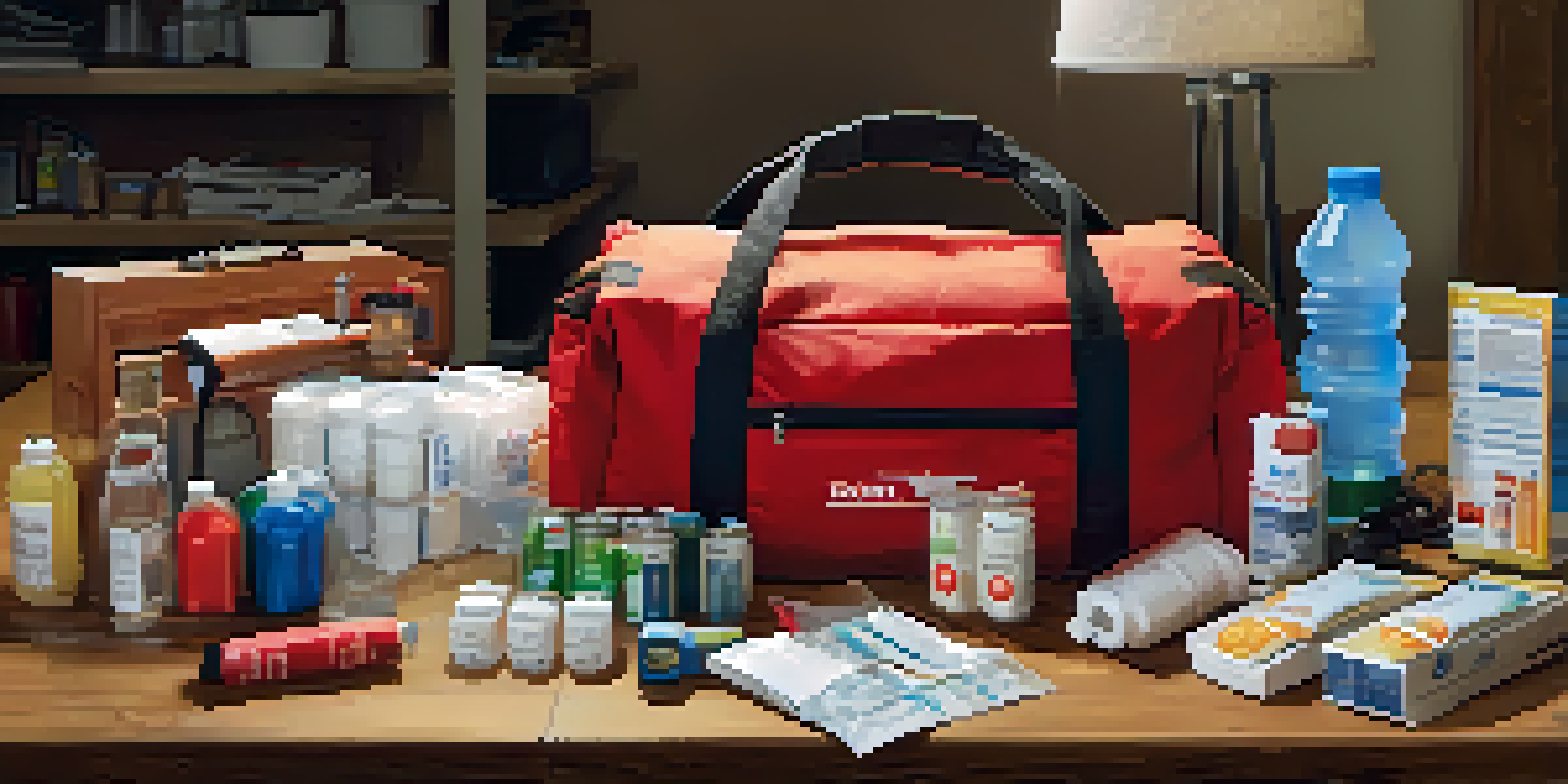Creating an Emergency Kit for Colorado's Unique Challenges

Understanding Colorado's Unique Environmental Risks
Colorado is known for its stunning landscapes, but these natural beauties come with unique challenges. From wildfires to blizzards, the state faces a variety of environmental risks that can strike unexpectedly. Understanding these threats is the first step in preparing an effective emergency kit.
By failing to prepare, you are preparing to fail.
For instance, wildfires can occur during dry seasons, especially in mountain areas, while snowstorms can leave residents stranded for days. Additionally, flash floods can happen in the summer months, particularly in burn scar areas. Recognizing these risks helps in selecting the right items for your emergency kit.
By taking the time to learn about Colorado's specific challenges, you can better safeguard yourself and your loved ones. This knowledge will guide your decisions on what supplies to include, ensuring your kit is comprehensive and relevant.
Essential Supplies for Your Emergency Kit
When it comes to building your emergency kit, think of it as a mini survival pack. Start with the basics: water, non-perishable food, and first-aid supplies. A good rule of thumb is to have at least one gallon of water per person per day for at least three days, along with enough food to last the same duration.

In addition to these essentials, consider adding a flashlight, batteries, and a battery-operated or hand-crank radio. These items can be lifesavers during power outages or when you need updates on emergency situations. Don’t forget personal hygiene items and important documents stored in a waterproof container.
Understand Colorado's Risks
Recognizing Colorado's environmental challenges, such as wildfires and snowstorms, is crucial for effective emergency preparedness.
Remember, your kit should cater to your family's specific needs. If you have pets, include supplies for them as well, ensuring everyone is accounted for during an emergency.
Tailoring Your Kit for Seasonal Changes
Colorado experiences significant seasonal changes, and your emergency kit should reflect that. In winter, prioritize items like warm blankets, hand warmers, and extra clothing layers. These can make a world of difference if you find yourself stuck in the cold.
The time to repair the roof is when the sun is shining.
Conversely, in the summer, think about including sunscreen, insect repellent, and hydration packs. These items can help you stay safe during outdoor activities or if you are stuck outside in the heat. Seasonal adjustments to your kit ensure you’re prepared for whatever nature throws your way.
By regularly reviewing and updating your supplies, you'll keep your kit relevant and effective. Consider setting a reminder every season to check expiration dates and restock as needed.
Creating a Communication Plan for Emergencies
An emergency kit isn’t just about physical supplies; it’s also about having a solid plan. Establishing a communication strategy can make all the difference in a crisis. Choose a designated meeting place for your family and ensure everyone knows how to get there.
Additionally, select an out-of-state relative or friend as your emergency contact. In the chaos of an emergency, local phone lines may be down, but long-distance calls often go through. Make sure everyone in your family is aware of this contact and has their information handy.
Build a Comprehensive Kit
An effective emergency kit should include essential supplies tailored to your family's needs and seasonal changes.
Practicing your plan can also be helpful. Conducting regular drills helps everyone understand their roles, making the process smoother when it truly matters.
Storing Your Emergency Kit Safely
Once you’ve gathered all your supplies, the next step is to store your emergency kit properly. Choose a cool, dry location that is easily accessible, such as a closet or garage. Ensure that everyone in the household knows where it is located so they can retrieve it quickly if needed.
Consider using waterproof containers or bags to protect your supplies from moisture and damage. Label the container clearly, so there’s no confusion during a stressful situation. Keeping your kit organized will save you time and effort when every second counts.
Lastly, remember to periodically rotate your items, especially food and water. This ensures that all supplies are fresh and ready to use when an emergency arises.
Involving Your Community in Preparedness
Building a successful emergency kit is not just an individual effort; it can involve your entire community. Engage with neighbors to discuss preparedness strategies and share resources. By pooling knowledge and supplies, you create a stronger safety net for everyone.
Consider participating in local emergency preparedness events or workshops. These gatherings provide excellent opportunities to learn from experts and connect with like-minded individuals. You might even discover new ideas for your emergency kit or ways to enhance your emergency plan.
Engage Your Community
Involving your community in preparedness efforts strengthens safety networks and enhances overall emergency response.
Community involvement fosters a spirit of cooperation, making it easier to respond effectively during a crisis. Remember, we are all in this together, and supporting each other can lead to better outcomes.
Staying Informed About Local Emergencies
Being prepared means staying informed about potential emergencies in your area. Sign up for local alerts and notifications through your county’s emergency management office or use apps that provide real-time updates. This information will help you make informed decisions when it matters most.
Additionally, keep an eye on local news and weather forecasts, especially during peak seasons for wildfires or storms. Awareness of current conditions can help you assess risks and act proactively, whether that means evacuating or sheltering in place.

Staying informed not only enhances your preparedness but also empowers you to help others in your community. Sharing critical information can save lives and reduce panic during emergencies.